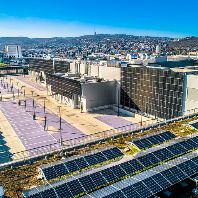Investors in non-listed real estate vehicles will allocate more to funds in Asia than to funds in Europe, according to a comparison of the two markets carried out by INREV, the European Association for Investors in Non-Listed Real Estate Vehicles and its sister organization, ANREV the Asian Association for Investors in Non- Listed Real Estate Vehicles.
While allocations to the sector from those who invest in both regions are set to increase during the course of this year, the growth will be at markedly different rates. Over 80% of people who invest in Asia are expected to increase their allocations to non-listed funds, while European investments will be substantially lower at 40%.
This trend is probably best explained by the fact that the Asian market is still comparatively young with investor interest in the sector growing rapidly.
The research paper compares the findings from both the INREV Investment Intentions Survey 2012 and the ANREV Investment Intentions Survey 2012. Expanding interest in the East Asia is becoming more attractive for investors as this year's Surveys for both regions show a net increase of 82% to Asian funds and 21% for European funds.
"Asia clearly has stronger economic fundamentals than Europe at the moment and that is attractive for investors. The mix of 'developed' and 'emerging' markets in the Asia region as a whole, also gives investors a good spread of options to satisfy their specific risk/return ambitions," said Casper Hesp, INREV's Director Research and Market Information.
Style and location preferences
Investors allocating capital to Europe have a strong primary preference for core products, with Germany identified as the most favored low-risk location. Where the desire for core products is echoed amongst those who invest in Asia they will typically target funds in countries such as Australia, Hong Kong, Japan, New Zealand, Singapore and South Korea.
Those who invest in Asia also have an appetite for opportunity style funds and will target investments in countries such as China, India, Indonesia, Malaysia, Thailand and Vietnam where the supply of such funds is expected to be higher. Of these, China is the favored location.
Joint venture investing is gaining attention from people investing in Asia, 67% of whom have stated their intention to invest in this way in 2012 (up from 33% in 2011). However, this trend is reversed for those investing in Europe where interest in JVs is set to fall from 67% last year to 40% this year.
Reasons to invest
and barriers
While investors in Asia use non-listed real estate funds as a way to enter new markets, in Europe, they use them to access expert management. Likewise, investors in the different regions diverge on the obstacles to investing in the non-listed sector. Current market conditions in Europe and the perceived lack of suitable products were highlighted as the main barriers for investors looking to invest in Europe.
For Asia, on the other hand, transparency is the key limiting factor. "These characteristics, emphasize perhaps more than any other the relative difference in the level of market maturity between the two regions, which is also accurately reflected in investors' style preferences in each of the different regions," commented Guido Verhoef, Head of Private Real Estate at PGGM Investments.
Source: INREV















